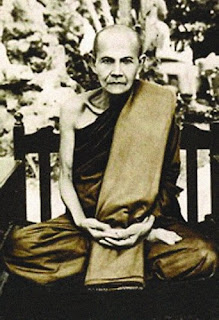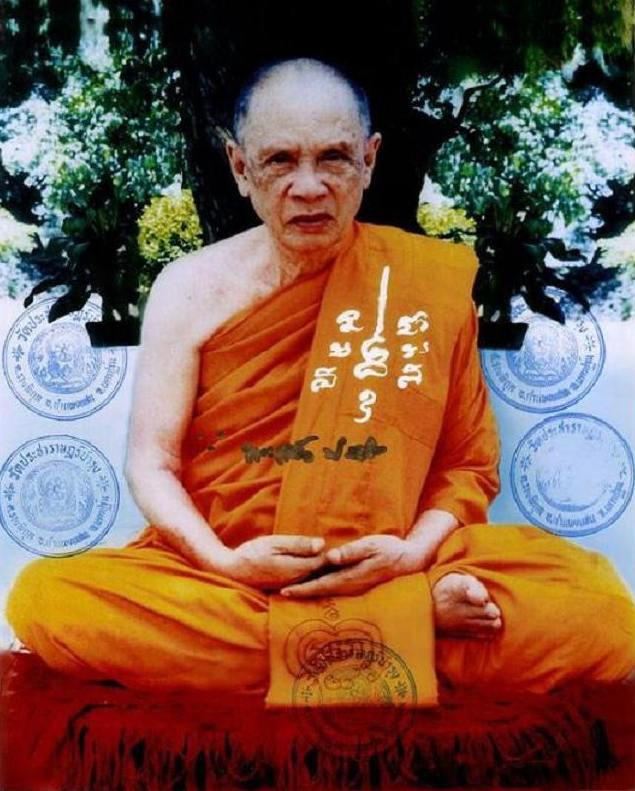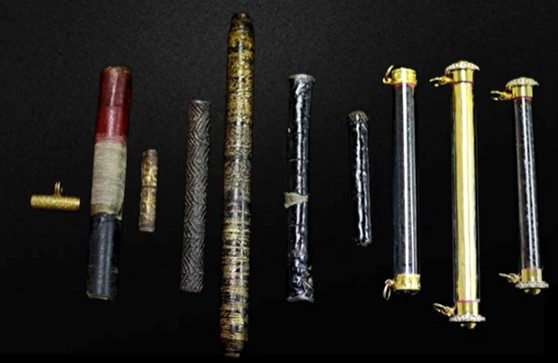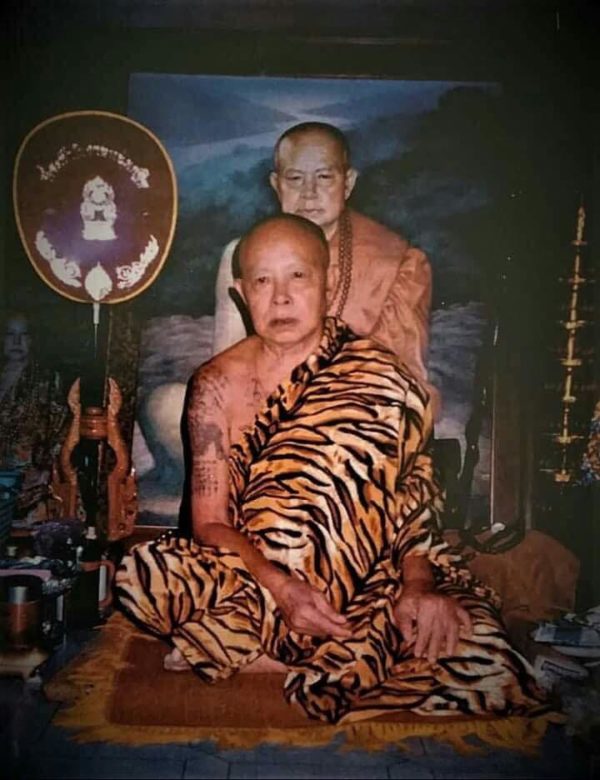Welcome to our store Uncle Chow Amulet Gallery
Archives
Phra Archan Mun Bhuridatta – Wat Pah Suthawas (Nakhon Sakhon)

About Phra Archan Mun Bhuridatta – Wat Pah Suthawas (Nakhon Sakhon)
Ajahn Mun Bhuridatta Thera (Thai: มั่น ภูริทตฺโต), 1870-1949 AD, was a Thai Buddhist monk who is credited, along with his mentor, Phra Ajahn Sao Kantasilo Mahathera, with establishing the Thai Forest Tradition (the Kammatthana tradition) that subsequently spreaded throughout Thailand and to several countries abroad.
Ajahn Mun was born on Thursday, January 20 1870 AD, in a farming village named Baan Kham Bong, Khong Jiam, on the western bank of the Mekong River, in present day Si Mueang Mai District, Ubon Ratchathani Province of North Eastern Thailand (Issan). Khong Jiam is located in a triangle of land where the Mun River flows into the Mekong River, as the Mekong turns east and flows into Laos. He was born into the Lao-speaking family of Kanhaew with Nai Kamduang as his father and Nang Jan as his mother. He was the eldest of nine children: eight boys and one girl.
Ajahn Mun was first ordained as a novice monk at age 16, in the local village monastery of Kham Bong. As a youth, he studied Buddhist teachings, history and folk legends in Khom, Khmer and Tham scripts from fragile palm leaf texts stored in the monastery library. He remained a novice for two years, until 1888 AD, when it was necessary for him to leave the monastery, at his father’s request.
Ajahn Mun was fully ordained as a monk at age 22, on June 12 1893 AD, at Wat Liap monastery in the provincial city of Ubon Ratchatani. Venerable Phra Ariyakavi was his preceptor. His announcing teacher was Venerable Phra Kru Prajak Ubolguna. Mun was given the Buddhist name “Bhuridatta” (meaning “blessed with wisdom”) at his ordination.
After ordination, Mun went to practice meditation with Ajahn Sao of Wat Liap in Ubon, where he learned to practice the monastic traditions of Laos. Ajahn Sao taught Mun a meditation method to calm the mind, the mental repetition of the word, “Buddho.” Ajahn Sao often took Ajahn Mun wandering and camping in the dense forests along the Mekong River, where they would practice meditation together. This is known as “tudong” in Thai, a name derived from the term “dhutanga”, which describes a number of specialized ascetic practices. One of the first long distance tudong was a pilgrimage to Wat Aranyawaksi in Thabor district, Nong Khai Province. At the time, Wat Aranyawaksi was a ruin, an abandoned, overgrown temple in the jungle. Ajahn Mun spent a year in “illumination” in the teak forest around the temple at this early part of his monastic life.
In 1899 AD, Ajahn Mun was re-ordained in the Thammayut Nikaya, a reformed Thai sect which emphasized monastic disciple and scripture study. Having practiced under the guidance of his teacher for several years and with his teachers blessings, Ajahn Mun went out on his own to search for advanced meditation teachers. During the next several years, he wandered extensively throughout Laos, Thailand and Burma, practicing meditation in secluded forests. Ajahn Mun and Ajahn Sao went on pilgrimage together in 1905 AD and venerated the Phra That Phanom shrine, a center of Theravada Buddhism for centuries, most sacred to the Lao people.
Ajaan Mun’s mode of practice was solitary and strict. He followed the Vinaya (monastic discipline) faithfully, and also observed many of what are known as the 13 classic dhutanga (ascetic) practices, such as living off alms, wearing robes made of cast-off rags, dwelling in the forest and eating only one meal a day. Searching out secluded places in the wilds of Thailand and Laos, he avoided the responsibilities of settled monastic life and spent long hours of the day and night in meditation. In spite of his reclusive nature, he attracted a large following of students willing to endure the hardships of forest life in order to study with him.


